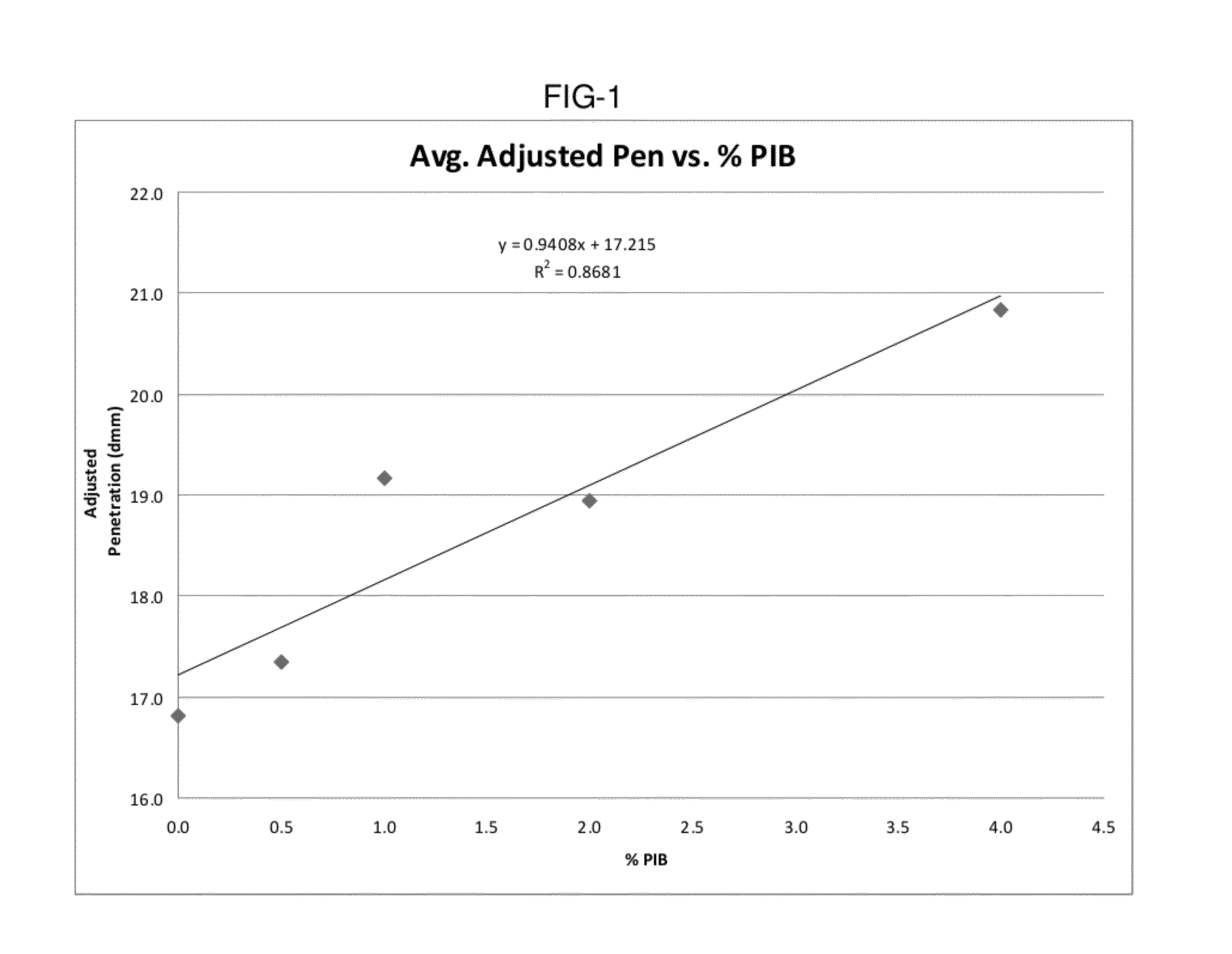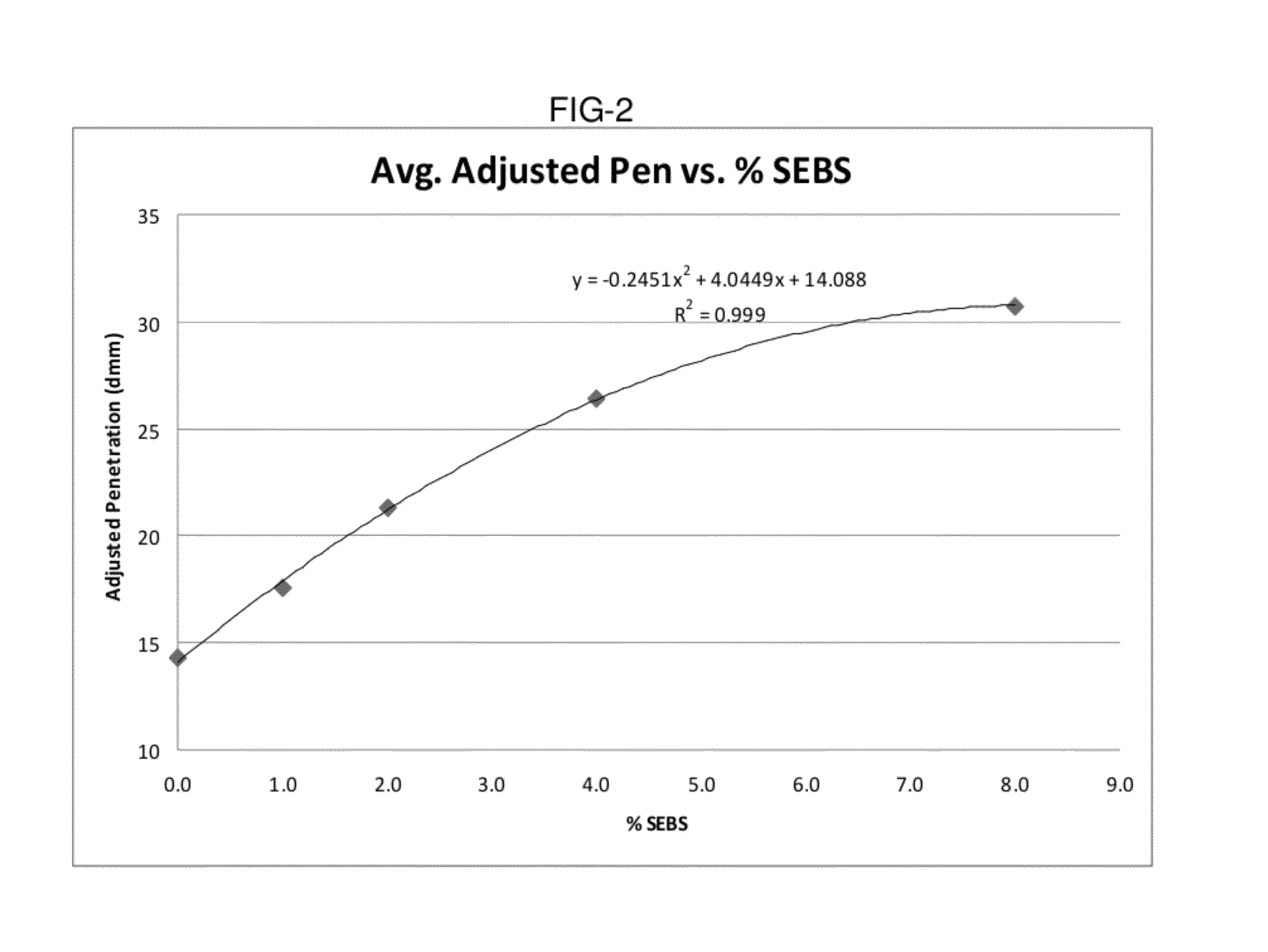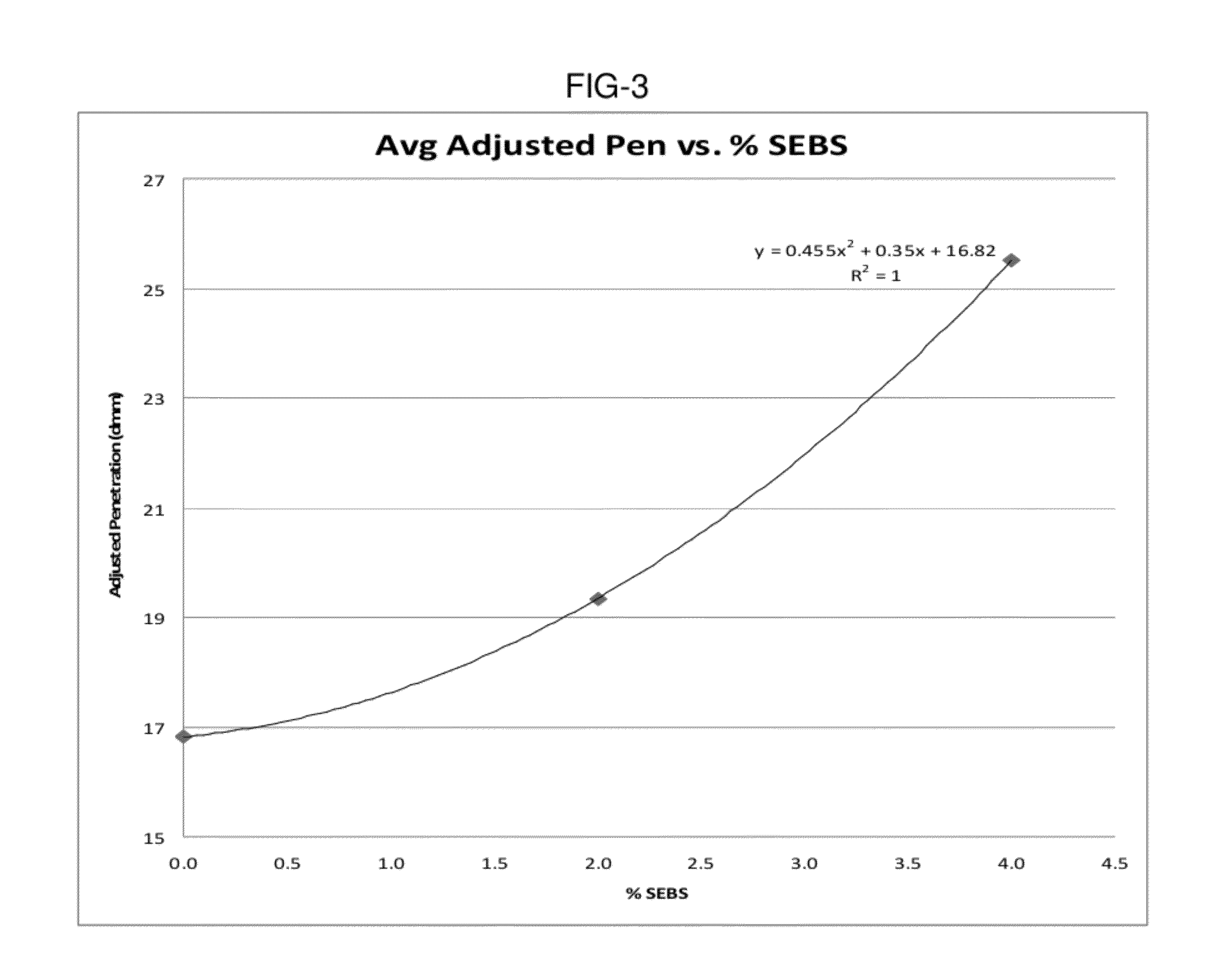Preparation of industrial asphalt
a technology of industrial asphalt and asphalt slurry, which is applied in the field of industrial asphalt preparation, can solve the problems of low penetration value, inability to air blow hard asphalt fluxes using conventional procedures, and inability to meet roofing applications, etc., and achieves the reduction of air blowing time required to produce industrial asphalt having the desired softening point, and less material loss.
- Summary
- Abstract
- Description
- Claims
- Application Information
AI Technical Summary
Benefits of technology
Problems solved by technology
Method used
Image
Examples
examples 1-12
[0036]In this series of experiments samples of asphalt flux having a softening point of 93° F. (34° C.) by the ring and ball method according to ASTM D36 / D36M (standard test method for softening point of bitumen), a penetration value of over 200 dmm measured at 77° F. (25° C.), a viscosity of 615 cP measured at 210° F. (100° C.), and a COC flash point of over 620° F. (327° C.) was heated in a laboratory oven set at 400° F. (204° C.). Once the flux was heated, the desired amount was poured into the top of a laboratory blow still. When the flux was added to the blow still its temperature was within the range of 200° F. to 250° F. (93° C. to 121° C.). Two blow stills were used in this series of experiments. One blow still had a total capacity of approximately 1 gallon (3.78 liters) and the other blow still had a total capacity of approximately 0.57 gallons (2.16 liters). The stills were filled to about 60% of their capacity with the samples of asphalt flux. More specifically, the 1 gal...
examples 13-22
[0041]SEBS was evaluated as an air blow modifier in this series of experiments using the same equipment and general procedure as was used in Examples 1-13 except that an asphalt flux from a different source having a softening point of 104° F. (40° C.) by the ring and ball method according to ASTM D36 / D36M (standard test method for softening point of bitumen), a penetration value of 182 dmm measured at 77° F. (25° C.), a viscosity of 2046 cP measured at 210° F. (100° C.), and a COC flash point of over 620° F. (327° C.) was substituted for the asphalt flux used in Examples 1-13 and except for the SEBS being substituted for the PIB evaluated in Examples 1-13. The SEBS evaluated in this series of experiments was in powder form. The percentage of highly saturated rubbery polymer (SEBS) added to the samples of asphalt flux, the level of blow loss experienced, and physical properties of the air blown asphalt samples made in this series of experiments are reported in Table 2.
TABLE 2BlowAdju...
examples 23-27
[0043]SEBS was evaluated as an air blow modifier in this series of experiments using the same equipment and general procedure as was used in Examples 1-13 except for the SEBS being substituted for the PIB evaluated in Examples 1-13. The percentage of highly saturated rubbery polymer (SEBS) added to the samples of asphalt flux, the level of blow loss experienced, and physical properties of the air blown asphalt samples made in this series of experiments are reported in Table 3.
TABLE 3BlowAdjustedSP1,Viscosity,Pen3,FP4,Time,BlowPen5,Example% SEBS° F.cP2dmm° F.min.LossdmmStain230.0207.1242.016.36152702.016.17240.0210.0302.916.36102253.016.711250.0212.7250.416.7>6202024.017.69262.0208.2269.919.3>6203002.119.39274.0208.1292.025.2NA1202.025.5121Softening Point2Viscosity was determined according to ASTM D4402 at 400° F. (204° C.)3Penetration was measured following ASTM D5 (Standard Test Method for Penetration of Bituminous Materials) at 77° F. (25° C.)4COC Flash Point5Adjusted Penetration ...
PUM
| Property | Measurement | Unit |
|---|---|---|
| softening point | aaaaa | aaaaa |
| temperature | aaaaa | aaaaa |
| softening point | aaaaa | aaaaa |
Abstract
Description
Claims
Application Information
 Login to View More
Login to View More - R&D
- Intellectual Property
- Life Sciences
- Materials
- Tech Scout
- Unparalleled Data Quality
- Higher Quality Content
- 60% Fewer Hallucinations
Browse by: Latest US Patents, China's latest patents, Technical Efficacy Thesaurus, Application Domain, Technology Topic, Popular Technical Reports.
© 2025 PatSnap. All rights reserved.Legal|Privacy policy|Modern Slavery Act Transparency Statement|Sitemap|About US| Contact US: help@patsnap.com



